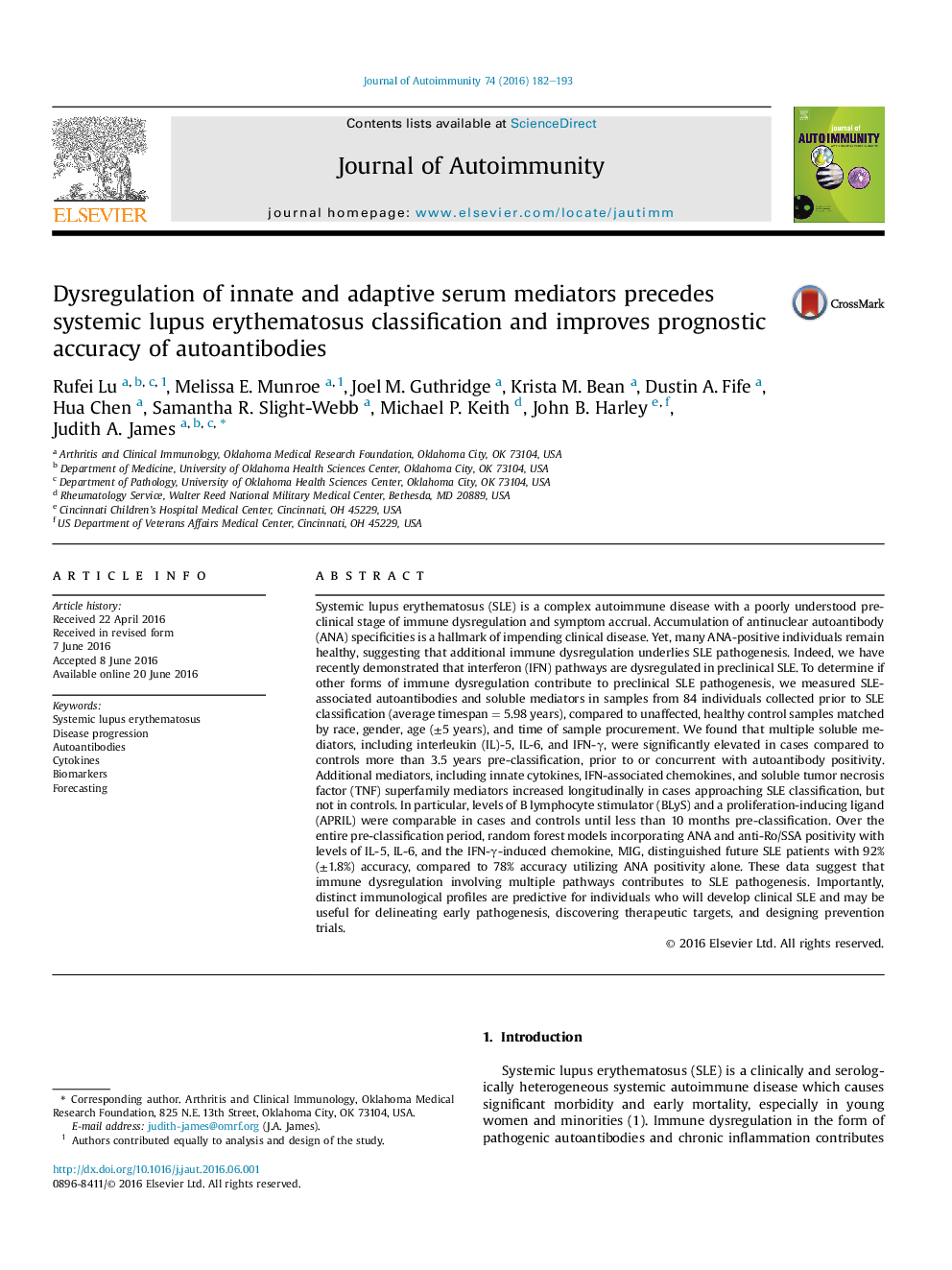| کد مقاله | کد نشریه | سال انتشار | مقاله انگلیسی | نسخه تمام متن |
|---|---|---|---|---|
| 5667906 | 1592275 | 2016 | 12 صفحه PDF | دانلود رایگان |
- Distinct T-helper type mediators are elevated >3.5 years before SLE classification.
- Elevated levels of IL-4, IL-5, IL-6, and IFN-γ precede autoantibody positivity.
- Immune dysregulation amplifies as patients approach SLE classification.
- Models incorporating autoantibodies and immune mediators accurately predict SLE risk.
Systemic lupus erythematosus (SLE) is a complex autoimmune disease with a poorly understood preclinical stage of immune dysregulation and symptom accrual. Accumulation of antinuclear autoantibody (ANA) specificities is a hallmark of impending clinical disease. Yet, many ANA-positive individuals remain healthy, suggesting that additional immune dysregulation underlies SLE pathogenesis. Indeed, we have recently demonstrated that interferon (IFN) pathways are dysregulated in preclinical SLE. To determine if other forms of immune dysregulation contribute to preclinical SLE pathogenesis, we measured SLE-associated autoantibodies and soluble mediators in samples from 84 individuals collected prior to SLE classification (average timespan = 5.98 years), compared to unaffected, healthy control samples matched by race, gender, age (±5 years), and time of sample procurement. We found that multiple soluble mediators, including interleukin (IL)-5, IL-6, and IFN-γ, were significantly elevated in cases compared to controls more than 3.5 years pre-classification, prior to or concurrent with autoantibody positivity. Additional mediators, including innate cytokines, IFN-associated chemokines, and soluble tumor necrosis factor (TNF) superfamily mediators increased longitudinally in cases approaching SLE classification, but not in controls. In particular, levels of B lymphocyte stimulator (BLyS) and a proliferation-inducing ligand (APRIL) were comparable in cases and controls until less than 10 months pre-classification. Over the entire pre-classification period, random forest models incorporating ANA and anti-Ro/SSA positivity with levels of IL-5, IL-6, and the IFN-γ-induced chemokine, MIG, distinguished future SLE patients with 92% (±1.8%) accuracy, compared to 78% accuracy utilizing ANA positivity alone. These data suggest that immune dysregulation involving multiple pathways contributes to SLE pathogenesis. Importantly, distinct immunological profiles are predictive for individuals who will develop clinical SLE and may be useful for delineating early pathogenesis, discovering therapeutic targets, and designing prevention trials.
199
Journal: Journal of Autoimmunity - Volume 74, November 2016, Pages 182-193
